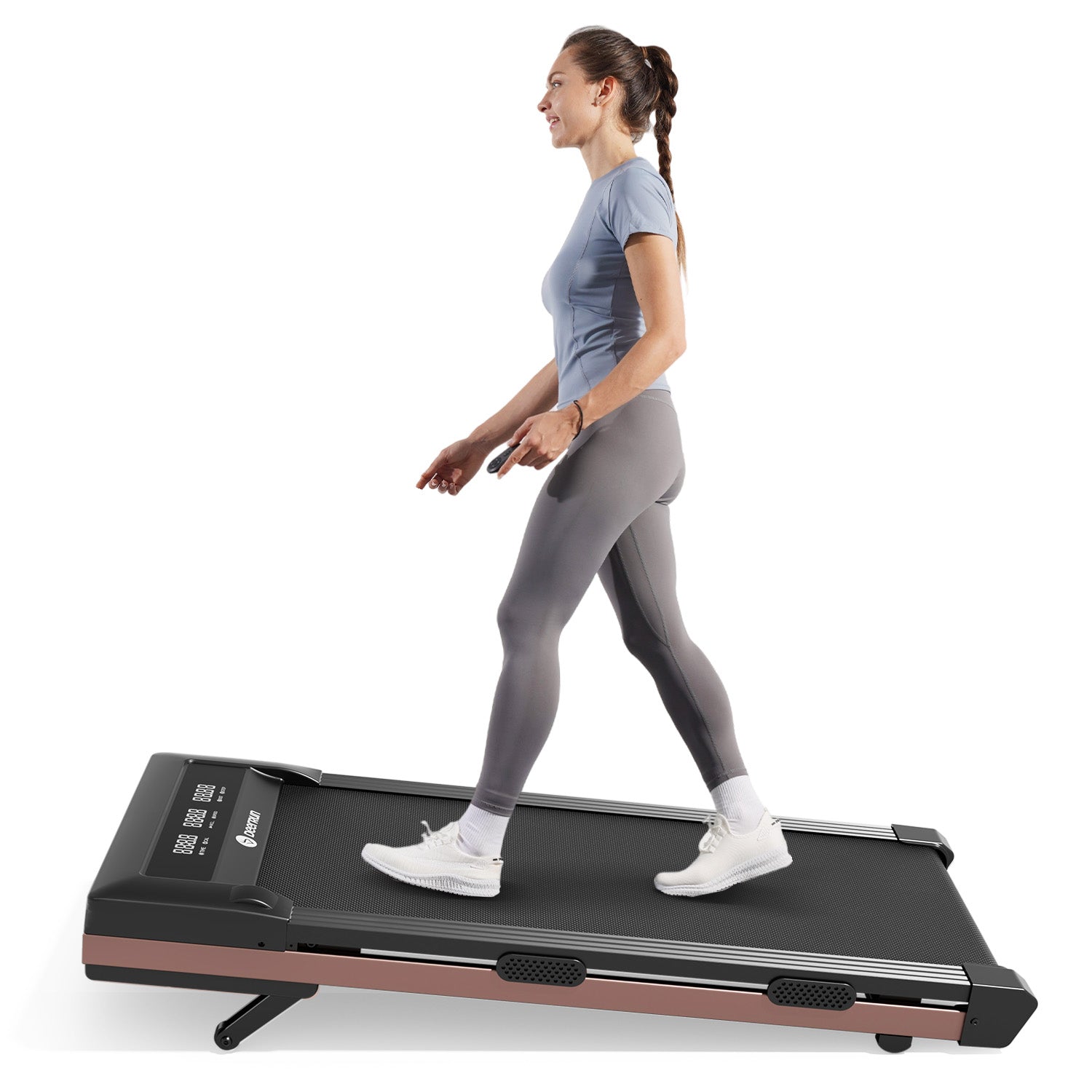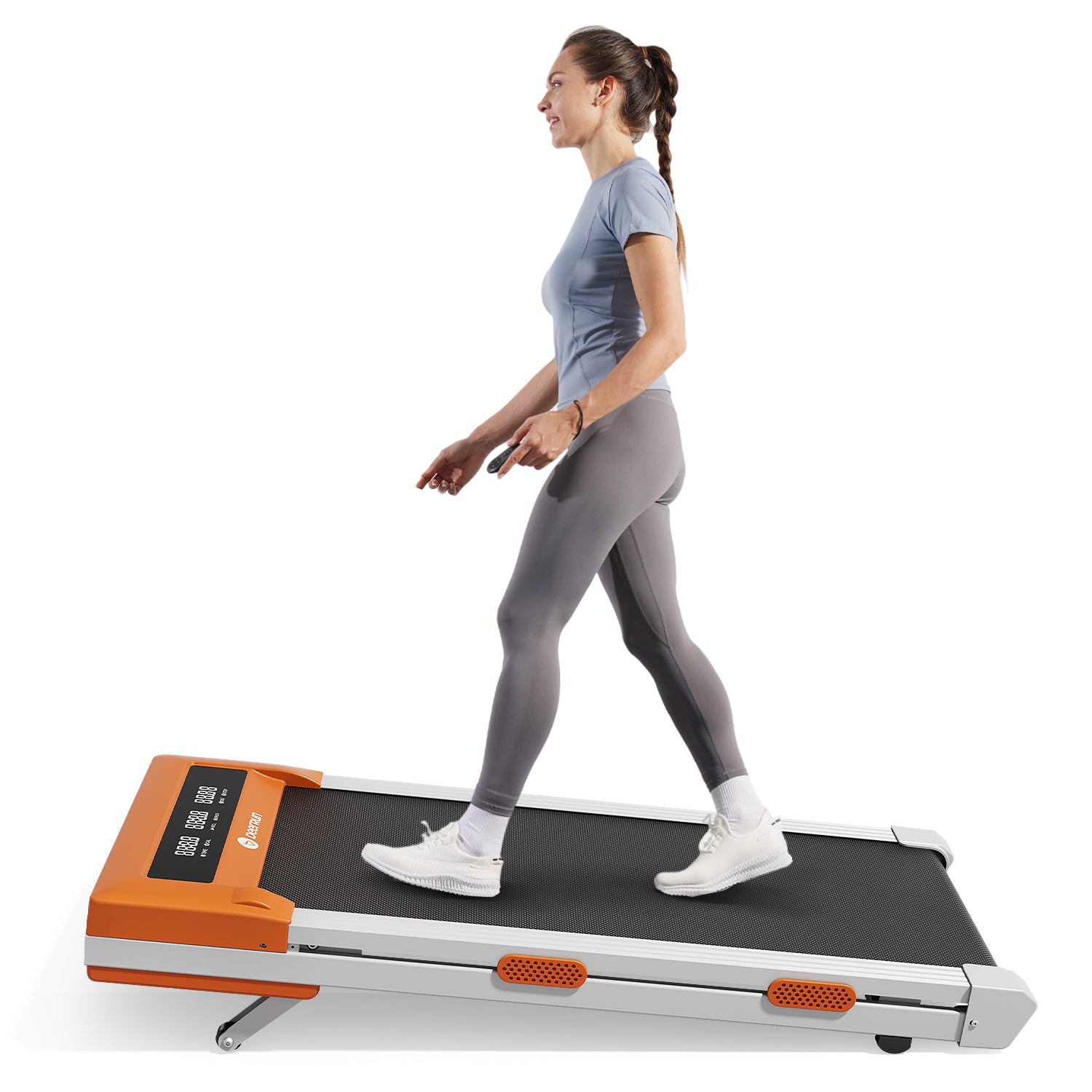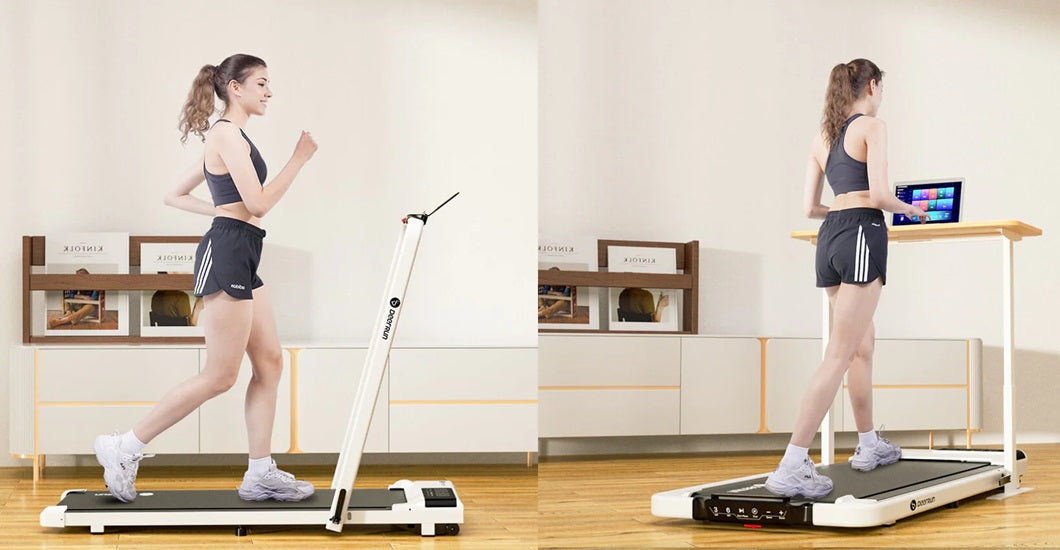In today's fast-paced world, finding the time for regular exercise can be a challenging task. However, when it comes to reaping the rewards of a powerful cardiovascular workout, the treadmill emerges as a true champion. Treadmill workouts not only offer a myriad of health benefits but also excel in their time-efficient nature, making them an ideal choice for those with busy schedules. In this guide, we will explore the numerous advantages of treadmill workouts and how dedicating just 30 minutes to this exercise routine can make a significant impact on your overall fitness and well-being. Join us as we uncover the world of efficient and effective fitness, all within the comfort of your own home or gym.
Warm-up (5 minutes)
Before delving into the high-intensity treadmill workout, it's crucial to understand the significance of a proper warm-up. This preparatory phase is like the overture to a symphony, setting the tone for what's to come and ensuring that your body is ready to perform at its best. Here, we'll discuss the importance of warming up and suggest two effective warm-up activities:
Importance of Warming Up Before a Workout
Warming up isn't merely a tradition in the world of fitness; it's a science-backed practice that can greatly enhance the safety and effectiveness of your exercise routine. When you warm up, you're essentially signaling your body that it's time to transition from rest to activity. This gradual shift in gears offers several key benefits:
- Increased Blood Flow:
A proper warm-up raises your heart rate and increases blood flow to your muscles. This, in turn, ensures that your muscles are well-supplied with oxygen and nutrients, preparing them for the physical demands ahead.
- Improved Joint Lubrication:
As your body temperature rises during a warm-up, your joints become more mobile and flexible. This reduces the risk of injury and discomfort during your workout.
- Mental Preparation:
Warming up mentally prepares you for the upcoming exercise, allowing you to focus, set goals, and get into the right mindset for a successful workout.
- Injury Prevention:
Perhaps most importantly, a warm-up significantly reduces the risk of injury. Cold, stiff muscles are more prone to strains, tears, and other injuries. A proper warm-up helps mitigate this risk.
Suggested Warm-up Activities
Now that we understand the "why" behind warming up, let's explore the "how." Here are two effective warm-up activities to consider:
- Walking at a Moderate Pace:
Start your warm-up by walking on the treadmill at a comfortable, moderate pace. This should be significantly slower than your intended workout pace. The idea is to gently elevate your heart rate and gradually introduce your muscles to the motion and impact of walking or running. Aim to maintain this pace for about 2-3 minutes.

- Dynamic Stretches:
Following the initial walking phase, transition to a series of dynamic stretches. These are active movements that mimic the range of motion you'll use during your workout. Dynamic stretches can include leg swings, hip circles, arm circles, and bodyweight lunges. Engaging in these stretches helps to further increase blood flow, loosen up your muscles, and enhance joint mobility.

By incorporating these warm-up activities into your treadmill routine, you're laying the foundation for a safer and more effective workout. Remember, taking the time to warm up is a small investment that yields significant returns in terms of your fitness journey. So, let's get started with our 30-minute treadmill workout, knowing that we're well-prepared for the challenges and benefits that lie ahead.
High-Intensity Interval Training (HIIT) (20 minutes)
Now that we're warmed up and ready to take our treadmill workout to the next level, it's time to explore the dynamic world of High-Intensity Interval Training (HIIT). This method of exercise has gained immense popularity for its efficiency and effectiveness in improving cardiovascular fitness and burning calories. In this section, we'll delve into the essence of HIIT, the structure of a typical HIIT session, and the outstanding benefits it offers for your cardiovascular health.
What is HIIT?
High-Intensity Interval Training, or HIIT, is a fitness approach that revolves around short bursts of intense exercise followed by brief periods of active recovery or rest. It's a highly efficient way to maximize your workout in a limited amount of time. HIIT can be applied to various exercises, and when adapted to the treadmill, it offers a potent cardio routine that can yield remarkable results.
HIIT Treadmill Routine
Here's a structured HIIT treadmill routine that you can follow:
- 5-Minute Brisk Walk:
Begin with a 5-minute brisk walk at a pace slightly faster than your warm-up pace. This phase allows your body to transition into higher intensity gradually.
- 30 Seconds of Sprinting:
After the brisk walk, crank up the speed to a sprint for 30 seconds. During this phase, push your limits, aiming to reach a speed that challenges your cardiovascular system and engages your muscles. It's important to maintain proper form and safety during the sprint.
- 1-Minute Recovery Walk:
Following the sprint, return to a comfortable walking pace for 1 minute. This recovery period helps bring your heart rate down and allows for partial recovery while still keeping your body active.
- Repeat Sprint and Recovery Cycle:
Repeat the 30-second sprint and 1-minute recovery cycle for the desired duration. A typical HIIT session may involve 6-10 cycles, but you can adjust the intensity and duration according to your fitness level.

Benefits of HIIT for Cardiovascular Health
The benefits of HIIT extend far beyond just burning calories and shedding excess weight. It's a potent tool for enhancing cardiovascular health in several ways:
- Improved Cardiovascular Endurance:
HIIT helps boost your heart's ability to pump blood efficiently, enhancing overall endurance and stamina.
- Fat Loss:
The intense bursts of exercise in HIIT activate your body's fat-burning mechanisms, helping to shed unwanted pounds.
- Lower Blood Pressure:
HIIT can help regulate blood pressure and improve the health of your blood vessels, reducing the risk of hypertension and related issues.
- Enhanced Oxygen Consumption:
HIIT increases your body's oxygen consumption, improving your lung and heart function, and thereby enhancing your aerobic capacity.
- Time Efficiency:
One of the standout benefits of HIIT is its time-efficiency. You can achieve remarkable cardiovascular benefits in a fraction of the time required for traditional cardio workouts.
By incorporating HIIT into your treadmill routine, you're supercharging your cardiovascular fitness, burning calories, and reaping the numerous advantages of this efficient and dynamic exercise approach. So, let's get ready to push your limits and elevate your heart rate as we dive into the heart-pounding world of HIIT on the treadmill.
Strength and Endurance Boost (5 minutes)
As we progress through our 30-minute treadmill workout, we now arrive at the Strength and Endurance Boost section. While cardiovascular fitness is essential, a well-rounded workout routine should also address strength and endurance. In this segment, we will introduce the concept and importance of building muscle and endurance, along with two effective exercises that can be seamlessly integrated into your treadmill routine.
Introduction to the Strength and Endurance Section
Strength and endurance are two pillars of physical fitness that play a significant role in improving your overall health and athletic performance. As we delve into this section of the workout, it's crucial to understand that building muscle and enhancing endurance go hand in hand. Strength training not only helps you achieve a lean, toned physique but also contributes to improved performance in various physical activities. Endurance, on the other hand, ensures that your body can sustain effort over extended periods. Together, they form a robust foundation for a healthy and active lifestyle.
Suggested Exercises
Here are two suggested exercises that you can incorporate into your treadmill workout to boost strength and endurance:
- Walking or Running Uphill:
Many treadmills offer an incline feature that allows you to simulate walking or running uphill. This activity engages your leg muscles, particularly the quadriceps, hamstrings, and calf muscles. It also increases the intensity of your workout, helping to build strength and endurance. Start with a gradual incline and adjust it according to your fitness level.
- Lunges or Squats (on the sidebars of the treadmill):
To incorporate strength training while using the treadmill, you can perform lunges or squats on the sidebars of the treadmill. Hold onto the handlebars for balance and support. Perform walking lunges or squats during your workout to target your leg muscles and add an element of resistance training.

The Importance of Building Muscle and Endurance
Building muscle and endurance should not be overlooked in your fitness journey. Here's why they are essential:
- Muscle Metabolism:
Muscle tissue burns more calories at rest than fat, aiding in weight management and metabolism.
- Improved Functional Strength:
Building muscle enhances your ability to perform daily tasks with ease, from lifting groceries to climbing stairs.
- Injury Prevention:
- Enhanced Endurance:
A well-rounded fitness regimen that includes strength training improves your overall stamina and endurance, allowing you to endure longer workouts or physical activities.
- Toned Appearance:
Strength training contributes to a lean and toned appearance, boosting your self-confidence and body image.
By integrating these strength and endurance-boosting exercises into your treadmill routine, you're ensuring that your workout addresses all facets of fitness. As we wrap up this section, let's move on to the cool-down phase, ensuring that we provide our hardworking muscles with the relaxation and recovery they deserve.
Conclusion
Congratulations! You've completed our 30-minute treadmill workout, a journey that's taken you through a series of well-structured phases designed to boost your cardiovascular fitness, strength, and endurance. As you catch your breath and let the sweat dry, it's essential to recognize the remarkable strides you've made in just half an hour.
This treadmill workout isn't just a quick way to break a sweat; it's a commitment to your well-being. In this short span of time, you've accomplished so much. You've warmed up to prepare your body, engaged in high-intensity interval training (HIIT) to skyrocket your cardiovascular health, and embraced strength and endurance exercises to enhance your overall fitness.
But the benefits extend beyond the physical. Each step you've taken on that treadmill signifies a step toward a healthier, happier, and more confident you. Your heart is stronger, your muscles are toned, and your endurance has grown.
Remember that consistency is key. Make this 30-minute treadmill workout a regular part of your fitness routine. Over time, you'll witness incredible progress, both in your physical abilities and how you feel about yourself. Your commitment to exercise is an investment in your long-term health, and it's a commitment that will yield lifelong dividends.
So, whether you're striving for weight loss, better cardiovascular health, improved strength, or just a way to relieve stress, this 30-minute treadmill workout has got you covered. It's a versatile, time-efficient, and effective approach to achieving your fitness goals. Keep pushing your limits, and remember that every stride you take brings you one step closer to a healthier, more vibrant you.
Thank you for joining us in this fitness journey. As you finish up your workout today, be proud of your accomplishments and stay motivated to make fitness a lifelong pursuit. The path to a better you starts with a single step on that treadmill, and the possibilities are endless.





























Leave a comment
All comments are moderated before being published.
This site is protected by hCaptcha and the hCaptcha Privacy Policy and Terms of Service apply.